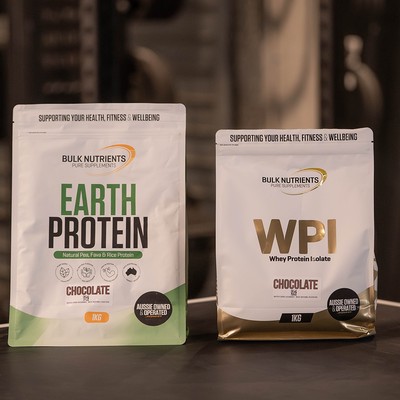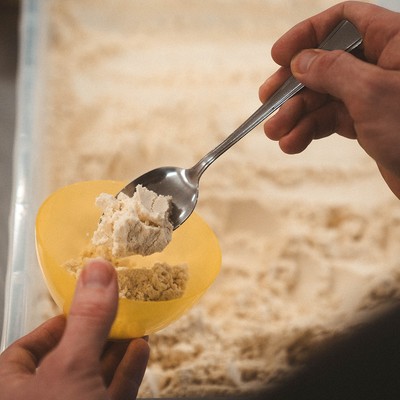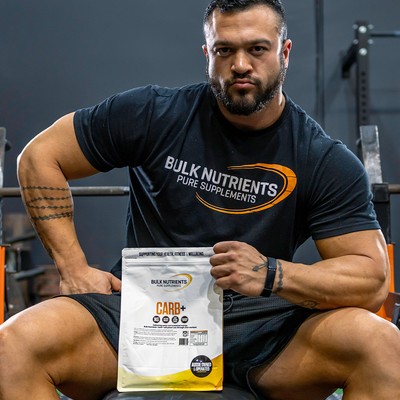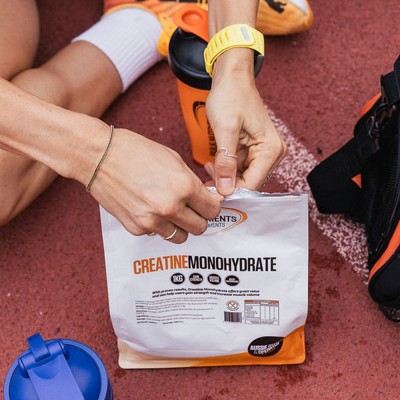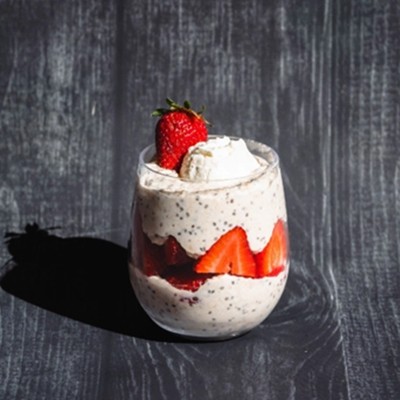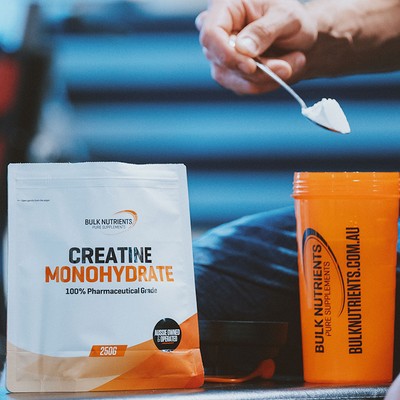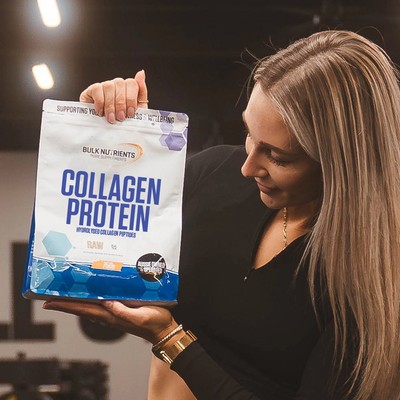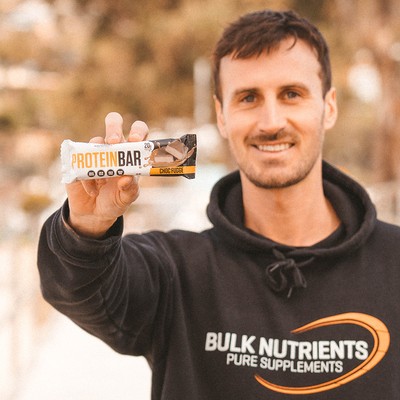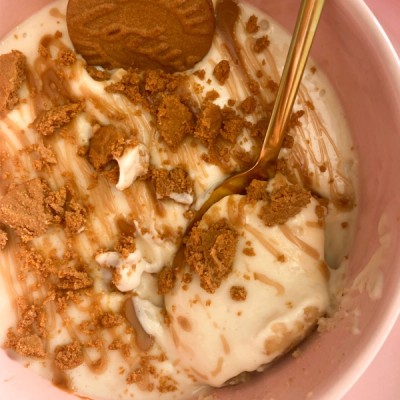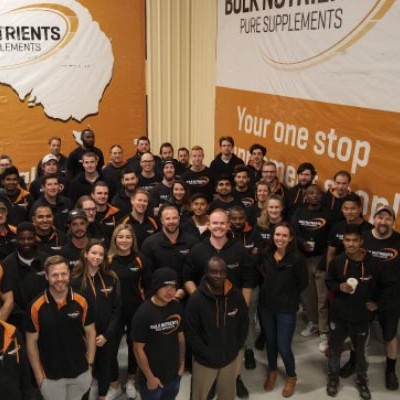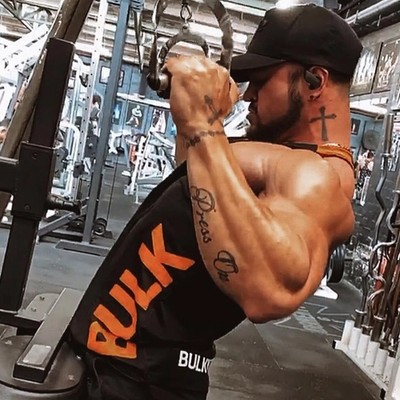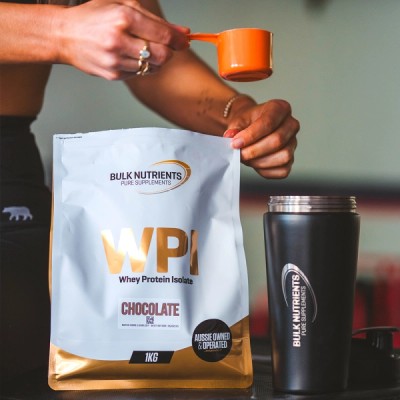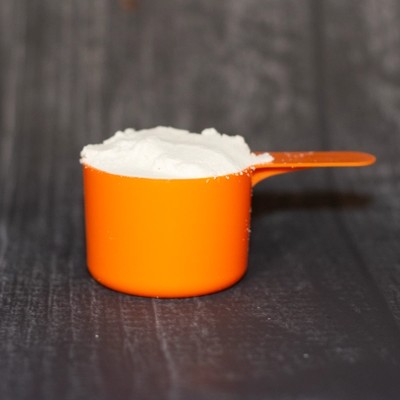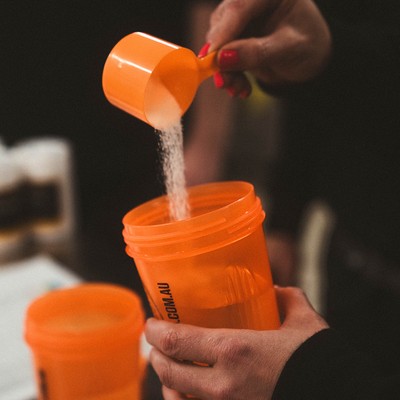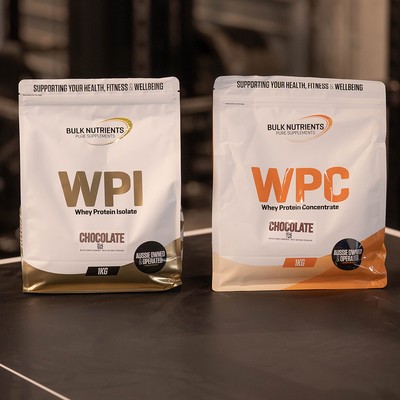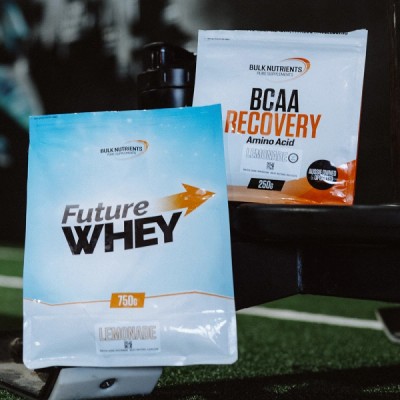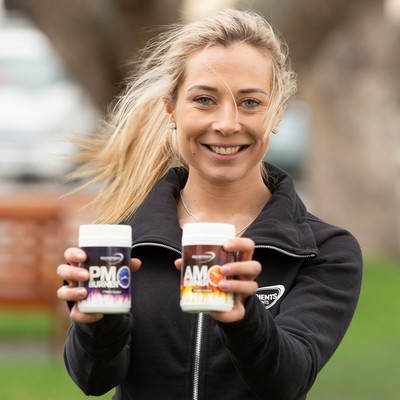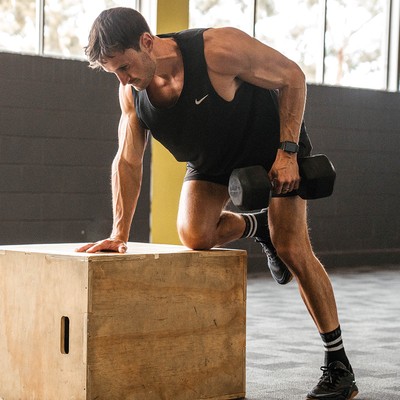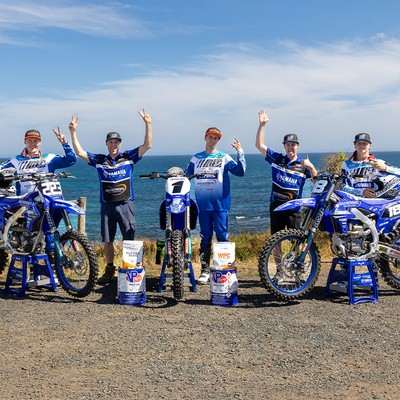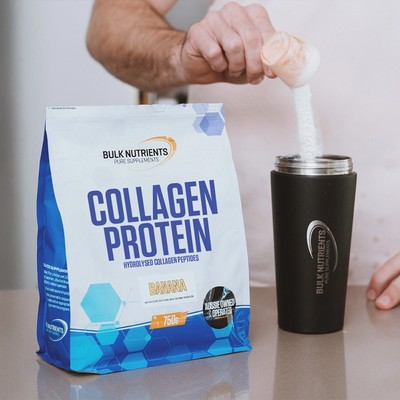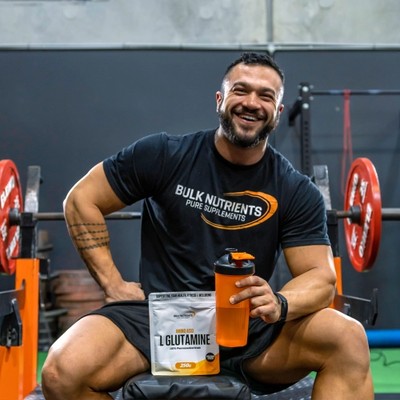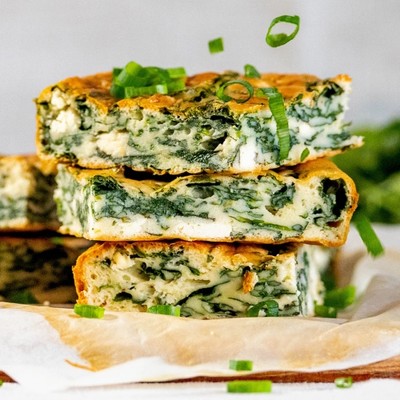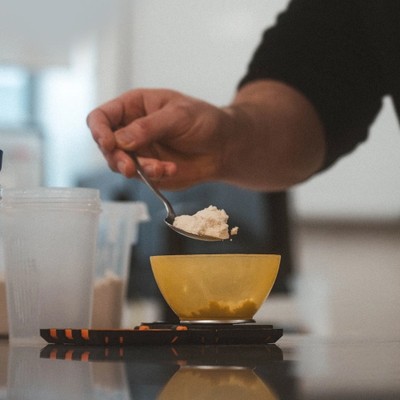What Muscles Do the Deadlift Actually Work?

How to do the conventional barbell deadlift
Firstly, a deadlift can be performed in multiple ways. But for this article, we'll hone in on the conventional barbell deadlift, as it's the most popular type performed.
The conventional barbell deadlift looks like the below when you start:
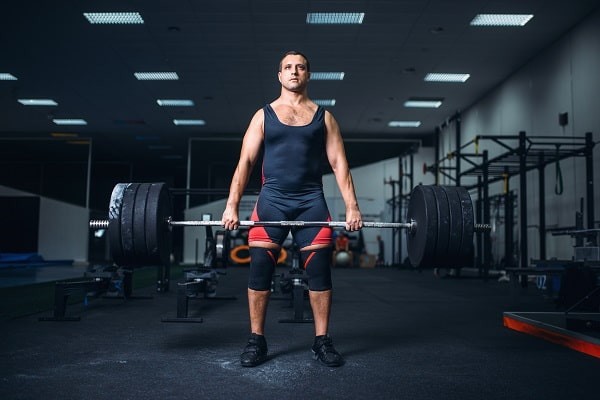
Then, we move into the who movement, which is done as follows:
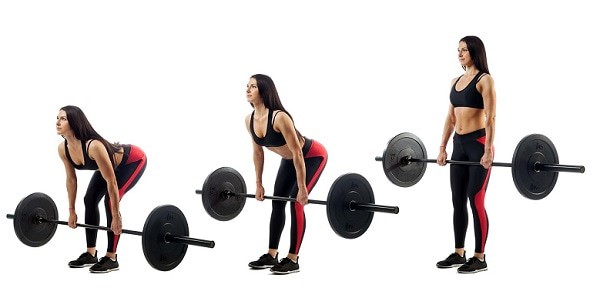
Step 1: Starting position
Once you’ve loaded your desired weight, ensure your heels are about six inches apart and your toes pointing out slightly. You want to be holding the bar with your hands evenly spread, a palm facing down grip, and lift with strong forearms to be about an inch from your shins.
Be sure to take a deep breath of air into your stomach (not your upper body!) and flex your abs.
Now it’s time to flatten our backs, which we do by pushing our hips up. Ensure your shoulders aren’t hunched forward by putting them down and back, and your forearms are strong and straight. Then, push your biceps into your lats: as if you’re trying to squish an apple under your armpits.
If your hamstrings are feeling tight, that’s a good sign – let them work!
Step 2: Coming up
We want to be gripping the bar as hard as possible and pull it straight up, driving with our heels and not our toes. Keep your elbows in place and definitely don't round your back! This is what we mean:
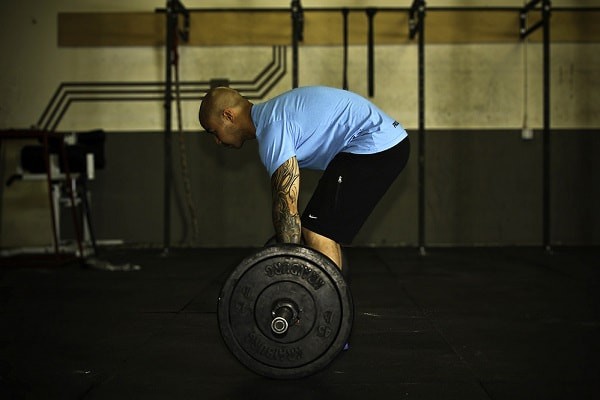
If you find yourself rounding your back, you're doing one of two things wrong:
- You're lifting too heavy
- You don't know how to deadlift with the right form yet
In this case, you'll need to re-read this and try with a very lightweight in front of a mirror until it looks like the first images above.
So back to the lift: you're driving with your heels.
And this next part is critical: your hips and shoulders should rise together. Don't fire your hips up and then use the strength of your back to bring your shoulders up. That can lead to all sorts of injuries. Be sure to keep the bar on an even path the whole time. Any tilts, moments of uneven lifting, or the bar coming too far away or towards you, isn't correct.
Push your hips into the bar once it comes over your knees. You'll then feel it move up your thighs. At this point, you'll feel your hips and hamstrings coming together to help you become vertical.
When you're standing, your chest should be up and not facing down. Your shoulders will be down, though.
Some people overextend here, but don't do that! This is what we mean:
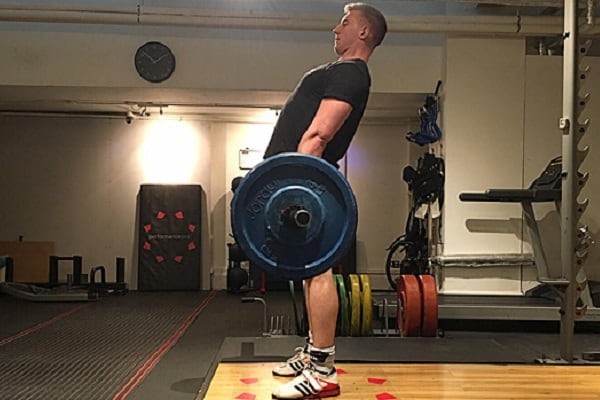
Step 3: Coming back down
And that's the whole rep nearly done! We must keep our cores flexed and backs upright and do the same movement but in reverse. We finish in the same position we started the lift in.
Allow the bar to slide straight down your quads, and let your hips shift backward until they go past your knees. Then you'll let the bar drop to the floor.
You want to spend 1-2 seconds on the downward movement; it's not a slow downward movement that we do sometimes during bench presses (sometimes called slow negatives). Make it quick!
Then, you may need to (slightly) reposition your feet and flex your hips or abs again. But be quick here too, you want to get yourself into the "next rep" position as fast as possible. Once you're happy, repeat step 1 to perform another rep!
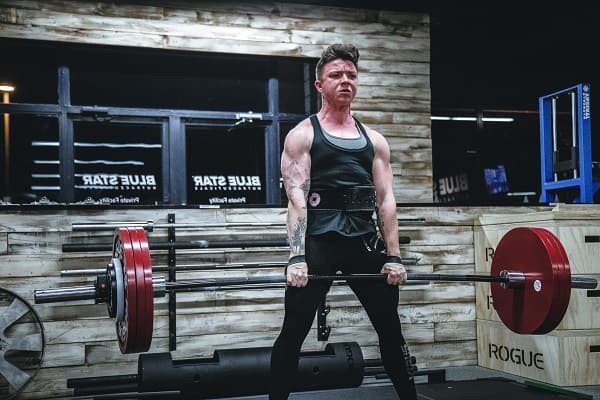
What muscles does the deadlift grow?
Many people will tell you deadlifts are great for the back. But the truth is, research shows they train almost all major muscle groups you have:
- Latissimus dorsi (back)
- Trapezius (traps)
- Calves
- Quadriceps
- Forearms
- Erector spinae (group of muscles and tendons that run up your spine)
Plus, the:
- Glutes
- Hip flexors
And these same researchers reported that the "Erector spinae and quadriceps muscles are more activated than gluteus maximus and biceps femoris (hamstrings) muscles within Deadlift exercises."
So, the deadlift is good for our erector spinae and quads (although we'd always train our quads separately and isolate them). The deadlift isn't so good for your glutes and hamstrings, though.
But one thing is for sure: the deadlift works a LOT of muscles.
And another thing researchers have worked out is that whilst deadlifts work many muscles, they don't work them necessarily all that well.
This study compared stiff-legged deadlifts (whilst different to the "conventional" we're talking about, still a deadlift all the same) and found the hamstring curls to be superior for working the hamstrings.
This is of no surprise; many lifters know that isolating a muscle is going to be better.
But it boils down to this; the deadlift is a great "all-rounder" for improving strength, burning calories, and working all those aforementioned muscles in one exercise. However, optimal growth of all those muscles could be achieved by training them directly, in concert with deadlifts.
For example, if optimal hamstring growth is the goal, then hamstring curls would be recommended with or without deadlifts. Whilst the deadlift works the erector spinae well and the quads well, we'd be advised to train quadriceps directly for optimal growth.
Looking for more check out Dave's definitive guide to deadlifting variations.

Dayne Hudson
Like many, Dayne was once desperate to lose weight and get into shape. But everyone he asked, everything he read, lead to the same place... nowhere.
His journey started there - researching science journals and completing a Sports Nutrition Specialist qualification so he could make weight loss easier.
References:
- Martín-Fuentes I, Oliva-Lozano JM, Muyor JM. Electromyographic activity in deadlift exercise and its variants. A systematic review. PLoS One. 2020;15(2):e0229507. Published 2020 Feb 27. doi:10.1371/journal.pone.0229507
- Schoenfeld BJ, Contreras B, Tiryaki-Sonmez G, Wilson JM, Kolber MJ, Peterson MD. Regional differences in muscle activation during hamstrings exercise. J Strength Cond Res. 2015 Jan;29(1):159-64. doi: 10.1519/JSC.0000000000000598. PMID: 24978835.
Related Blogs
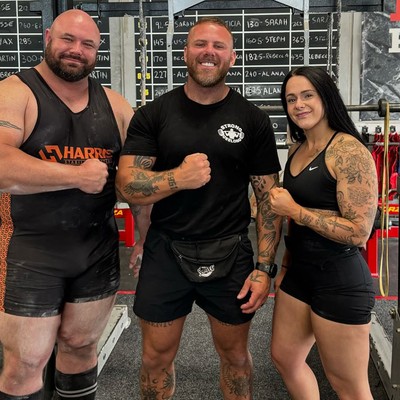
A Complete Guide on How to Grow Bigger Forearms
Posted by Dayne Hudson
Estimated reading time: 10 minutes

What Is the Ideal Rep Range for Muscle Growth?
Posted by Mason Brezinscak
Estimated reading time: 5 minutes
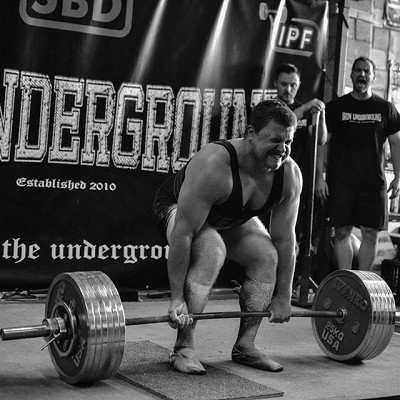
How to Increase Deadlift Intensity
Posted by Dave Napper
Estimated reading time: 1 minute
